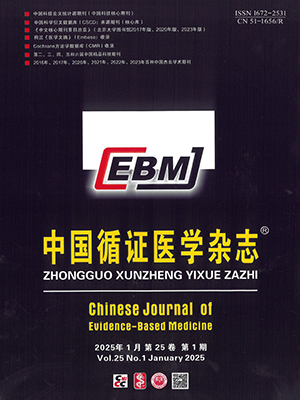Objective To establish a risk evaluation indicator system for intrauterine device (IUD), to determine the weight of indicators, to comprehensively evaluate the risk of IUDs by using a variety of comprehensive evaluation methods according to the data of IUDs, so as to provide references for the government purchasing decision-making.
Methods The literature review, long-term monitoring of IUD adverse events, large sample randomized controlled trials (RCTs) and Delphi methods were applied to establish the risk evaluation indicator system for IUD. The weight of each indicator was determined by jointly using the subjective scoring method and CRITIC method. Based on the established indicator system, primary research (RCT) data and secondary research data (literature data), the analytic hierarchy process (AHP), technique for order preference by similarity to ideal solution (TOPSIS) and synthetical scored method were used to assess the risk of IUDs respectively, and then the assessment results of three methods were integrated to obtain a comprehensive rank of various IUDs.
Results A two-level risk evaluation indicator system for IUD was established and the seven 1st level indicators included unwanted pregnancy, expulsion, menstruation problems, pain, IUD ectopia, position and shape changes as well as total health problems, which were divided into 26 2nd level indicators. Through the subjective and objective weighting method, the weights of each 1st level indicator were 0.147 5, 0.144 3, 0.140 7, 0.174 8, 0.163 2, 0.132 8, and 0.096 6, respectively. The risk evaluation of the above three methods showed that among the three kinds of IUD in a multicenter RCT, yuangong365 was with the lowest risk, followed by TCu380A and MLCu375. The risk evaluation showed that among the 14 kinds of IUD from literatures, medicated γ IUD was with the lowest risk, followed by HCu280, yuangong365, and Gyne IUD, while the medicated stainless steel ring 165 was with the highest risk.
Conclusion The established indicator system has a good representation and credibility, and the ways to identify the weight of indicators are scientific, comprehensive and accurate. Meanwhile, the findings which were demonstrated by various assessing methods are consistent to a large extent. Now that medicated γ IUD and HCu280 have been already included in the National Coverage Plan, it is suggested that if the prices of yuangong365 and Gyne IUD are reasonable, the two IUDs could be considered to be listed in the National Coverage Plan and freely chosen by women of child-bearing age.
Citation: LI Ling,WEN Jin,LI Youping,LI Ying,WANG Li,GAO Zhan,CHENG Lan,YUAN Qiang. A Study on Risk Evaluation Indicator System and Comprehensive Evaluation Method for Intrauterine Device. Chinese Journal of Evidence-Based Medicine, 2011, 11(7): 753-762. doi: 10.7507/1672-2531.20110130 Copy
Copyright © the editorial department of Chinese Journal of Evidence-Based Medicine of West China Medical Publisher. All rights reserved
-
Previous Article
Visualization Studies on Evidence-Based Medicine Domain Knowledge (Series 2)—Structural Diagrams of Author Networks -
Next Article
Medical Education Model with Core Competency as Guide, Evidence-Based Medicine as Carrier and Lifelong Learning as Purpose (3): Current Status of Information Literacy on Medical Students




